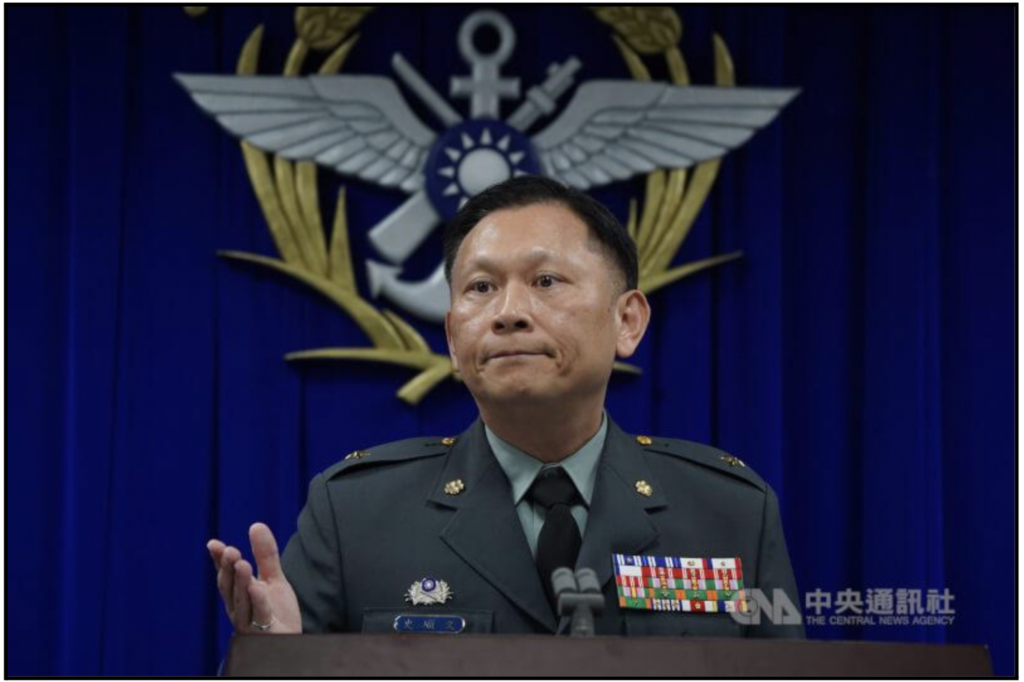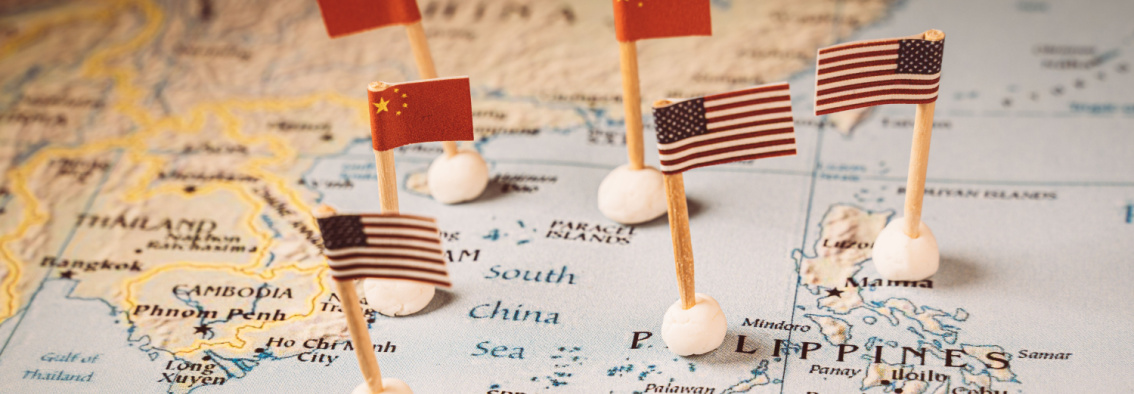Talk of balloons has been in the air, so to speak, ever since the initial public reports at the beginning of February regarding a People’s Republic of China (PRC)-operated, high-altitude reconnaissance balloon floating over Montana. Following the shoot-down of this initial balloon off the coast of South Carolina on February 4, at least three additional detections—and shoot-downs—of mysterious airborne objects followed. (Although details remain sketchy, US government officials have since indicated that the latter three objects were likely not reconnaissance balloons.) [1] Despite confusion surrounding the latter objects, ample indications exist that the first balloon shot down over North American airspace this month was part of a PRC state-run reconnaissance program, and the tip of a much larger iceberg. While news stories of mystery flying objects in North American skies have seemingly received the lion’s share of attention (at least in the United States) over the past three weeks, many other countries have also reported overflights of such balloons. This includes Taiwan—the state most directly menaced by PRC military aggression— which has seen multiple cases of suspected PRC reconnaissance balloon overflights in recent years.
The PRC’s Reconnaissance Balloon Program—and Recent Sightings in Other Countries
Setting aside more outlandish explanations (such as speculation that the objects are of extraterrestrial origin), the reported recovery of electronic sensor equipment from the balloon shot down along the South Carolina coastline points towards the existence of a PRC state-run reconnaissance program. Specifically, this operation has employed balloons (and possibly other unconventional aircraft) for imagery and signals collection, operating at speeds and altitudes that may have allowed them to exploit a “domain awareness gap” in US and Canadian air defenses. The revelation of the balloon overflight has had significant geopolitical implications—in the form both of a cancelled trip to China by US Secretary of State Antony Blinken, as well as placing a further chill on already frosty US-China relations. For its part, the PRC government has continued to maintain that the vehicle shot down off the South Carolina coast was an off-track weather balloon, and has made counter-accusations that US balloons have entered PRC airspace 10 times over the past year.

Image: A still image from amateur video of a high-altitude balloon—unidentified, but matching the characteristics of PRC surveillance balloons sighted in other locations—flying over northern Taiwan in September 2021. (Image source: Central News Agency)
The revelation of the Chinese “spy balloon” traversing the United States in early February was paralleled by reports of another such balloon that was reportedly spotted flying over Costa Rica, Colombia, and Venezuela between February 2-3. In the wake of these incidents, even more reports began to emerge about other suspected reconnaissance balloons: for example, on February 14, authorities in Moldova and Romania reported an aerial object with “characteristics similar to a weather balloon,” causing Moldova to temporarily close its airspace and Romania to scramble fighter aircraft to investigate.
However, while such incidents have occurred worldwide, the most persistent reports of these mystery balloon sightings have occurred in Asia-Pacific countries on China’s periphery. Prominent examples from recent years include:
- An unidentified white balloon was reported hovering in the skies over India’s Port Blair, in the Nicobar and Andaman Islands, around the time of an Indian multi-service military exercise in early January 2022
- On February 18, 2022, US Air Force fighters responded to reports of an “unmanned balloon without observable identification markings” flying over the Hawaiian island of Kauai, the site of the Pacific Missile Range Facility Barking Sands, an important site for US military weapons testing.
- An unidentified balloon, with a reported cross-shaped undercarriage, was reported flying over the Japanese city of Sendai (northern Honshu) in mid-June 2020. On February 14, 2023, Japan’s Defense Ministry issued a statement indicating that PRC surveillance balloons had entered Japanese airspace on at least three occasions in 2019, 2020, and 2021, but did not provide specific details. The following day, Chief Cabinet Secretary Hirokazu Matsuno told media representatives that “As a result of further investigation of specific balloon-shaped flying objects that were confirmed in Japan’s airspace in the past, it is strongly suspected that they were unmanned surveillance balloons from China.”
While it cannot be conclusively determined that all such incidents are linked to a PRC reconnaissance balloon program, they do fit the pattern of what recent Washington Post reporting, citing unnamed US intelligence officials, has called a “vast aerial surveillance program” operated by the People’s Liberation Army (PLA) from the southern Chinese island of Hainan, which has dispatched balloons over a host of countries, including India, Vietnam, Japan, Taiwan, and the Philippines.
PRC Reconnaissance Balloons Over Taiwan
Taiwan, as the state most directly in the crosshairs of PRC military planning, has also been the apparent target of the suspected PLA balloon reconnaissance program—and at a level of frequency and persistence that likely exceeds that directed towards other states in the region. On February 4, Taiwan’s Central Weather Service Director Zheng Ming-tian (鄭明典) issued comments and social media posts indicating that balloons similar to the one tracked over the United States had been detected in the airspace over northern Taiwan on at least two occasions, in September 2021 and March 2022. Zheng also posted photos of another such balloon spotted on December 31, 2021, which was observed flying over the He-huan Shan (合歡山) area of Nantou County in central Taiwan, and which traversed in a southeasterly direction at an elevation of 2,750 meters (approximately 9,000 feet).
For its part, the Republic of China (ROC) Ministry of National Defense (MND, 中華民國國防部) issued subsequent statements in mid-February indicating that the ROC Air Force had tracked four balloons in Taiwan airspace in February and March 2022. Other government officials cited by the Financial Times indicated that PRC military reconnaissance balloons had flown over Taiwan “very frequently”—as often as “once a month”—at elevations of approximately 20,000 feet, and that their construction and payloads did not match that of conventional weather balloons. The same article cited unnamed intelligence officials from three Asian countries to indicate that the reconnaissance balloons had been developed under the cognizance of the Equipment Development Department of the Chinese Communist Party Central Military Commission (中國共產黨中央軍事委員會裝備發展部), and that the balloons were operated by both the PLA Air Force and the PLA Rocket Force, in part to obtain atmospheric sampling data intended to improve the accuracy of radar and missile systems.
In the wake of February’s increased public attention to the balloon controversy, Taiwan’s MND has attempted to reassure the public with an assertive stance, stating that Taiwan’s military forces were on guard against aerial incursions, and that any suspect aerial objects from the PRC flying over Taiwan would be shot down. Adding to the ongoing controversy, on February 16 the MND reported the discovery of a Chinese weather balloon that had landed on Tungyin Township (東引鄉) in the Matsu Island group (馬祖列島), although it is unclear as to whether or not this balloon is associated with the reconnaissance program.

Image: PRC reconnaissance balloon flights over Taiwan are not new: here, Taiwan Ministry of National Defense spokesman Shih Shun-wen (史順文) speaks at a press conference in February 2022, addressing PRC balloon flights over Taiwan. (Image source: Central News Agency)
So, Why All the Balloons?
Early February’s intense public interest in the United States and other countries regarding Chinese balloons (whether real, or cases of misidentification) seems likely to drift away as other stories float in to center stage in the political and media environment. However, the balloon incidents should be kept in mind for what they reveal about PRC interests and ambitions in the Asia-Pacific region. While there is much about the PRC balloon program that remains murky, two facts appear to be clear: first, that it is a PLA reconnaissance program intended to gather information on potential targets and sites of military interest, as well as for gathering atmospheric data to improve the functionality of surveillance and weapons systems; and second, that Taiwan remains the most intense focus of the PLA’s intelligence collection.
The reported balloon overflight incidents should not be viewed in isolation, but rather as one component of a much broader PLA aerial reconnaissance program. This includes elements such as the PLA aircraft flights near the Taiwan-administered Pratas Islands (Dongsha Islands, 東沙群島) in the South China Sea, as well as the multiple incidents of PRC-operated unmanned aerial vehicles (UAVs) operating around and over Taiwan’s outlying Kinmen Island (金門). In addition to providing collection of tactical military data, such provocative aerial reconnaissance activity also serves a political purpose: as noted by analyst Lin Bai-chou (林柏州) of the Institute for National Defense and Security Research (INDSR, 財團法人國防安全研究院), such actions are also intended as “gray zone” (灰色地帶) harassment intended to intimidate Taiwan’s population, and to wear down the will of Taiwan’s defenders in the military and government. The PLA’s propaganda likes to project an image of its aviation assets operating over Taiwan with impunity, whether true or not. In the case of balloons, they provide an asset that can both collect data and be visible to the public, while also allowing for deniability and a low risk of escalation.
Much of February’s excitement in America and elsewhere over real or suspected Chinese “spy balloons”—with some media and political commentary verging on hysteria—will, in all likelihood, be retroactively seen as overblown. However, these incidents serve as a worthwhile reminder of the pervasive intelligence collection efforts of the PLA, and other PRC state entities, as they seek to further the CCP’s geopolitical ambitions. The reconnaissance balloons drifting over Taipei are yet another reminder that Taiwan remains squarely in the crosshairs of Beijing’s irredentist plans for the island and its people.
The main point: The suspected PRC reconnaissance balloons recently detected over the United States and other countries have been used even more extensively for flights over Taiwan, where they serve a dual purpose of both intelligence collection and “gray zone” intimidation.
[1] The latter three incidents involved: an unidentified aerial object off northern Alaska on February 10; a cylindrical aerial object over Canada’s western Yukon Territory on the 11th; and a final object (described as octagonal in shape, with hanging strings or wires) over Lake Huron on the 12th. Although Pentagon and Biden Administration officials have been understandably reserved in commenting on the objects while efforts were reportedly underway to recover the wreckage (in the latter three cases, in remote and/or difficult environments), statements from senior US officials briefed on the incidents have indicated that these three aerial objects were likely balloons of various types. On February 14, administration officials indicated that the latter three balloons (e.g., the ones shot down over Alaska, the Yukon Territory, and Lake Huron) were likely of private and/or commercial origin, but did not provide further details.
February 13, 2023
[REPORT] Assessing Trends and Demand Signals for Taiwan’s New Southbound Policy and Building a US-Taiwan Coordination Mechanism




